RIKEN Early Career Leaders Program
Overview
RIKEN has hired 13 researchers as Principal Investigators (PIs) under RIKEN Hakubi Fellows Program since 2018 and played a great role in nurturing excellent early career researchers. To develop support for junior researchers, we have established the RIKEN Early Career Leaders Program (ECL Program) using the concept of the Hakubi Fellows Program.
The RIKEN ECL Program offers 2 types of positions: Team Leader and Unit Leader. The positions focus on natural and mathematical sciences, including research areas bordering the humanities and social sciences, and provide researchers with an appropriate research environment corresponding to their research plan and career stage.
Adequate operation expenses will be provided to open a laboratory so that successful applicants can hire researchers and technical staff. It is also possible for successful applicants to host Special Postdoctoral Researchers, Junior Research Associates, International Program Associates and RIKEN Student Researchers, using the headquarters’ budget. In the course of their research, they can use various RIKEN facilities and shared-use equipment and will have opportunities to interact with researchers in a variety of research fields.
They can get advice from mentors, experienced researchers, regarding laboratory management. Regardless of whether they serve as a Team Leader or Unit Leader, RIKEN can provide them with a variety of career paths, such as the indefinite-term PI position.
The RIKEN ECL Program holds a call for applications for the two positions starting in April 2023, with the aim that the personnel hired through this call will be able to start work at RIKEN in FY 2024. This program will support early career researchers who will launch their own laboratory and work on their research project at RIKEN.
RIKEN ECL Team Leader
For talented junior researchers who are willing to take on ambitious research with high scientific and social impact, this program offers the opportunity to become an independent PI and lead their own team to advance their research.
- Term: 7 years
- Salary: 910,000 JPY per month
- Research budget: 10 to 40 million JPY per year (Additional 10 million yen will be provided to female Team Leaders in the first year from the Diversity Promotion Fund)
RIKEN ECL Unit Leader
For talented junior researchers who are willing to take on their own unique research, this program offers the opportunity to become an independent PI and develop the research. In particular, to promote employment of promising young researchers, a flexible research environment will be provided at a research center or equivalent with which they will be affiliated.
- Term: 5 years
- Salary: 710,000 JPY per month
- Research budget: Approximately 10 million per year (Additional 10 million yen will be provided to female Team Leaders in the first year from the Diversity Promotion Fund)
FY 2024 call for proposals
Call for RIKEN Early Career Leaders Program (FY2024)
Sechi Kato Program for RIKEN ECL Program
The Sechi Kato Program was established in FY 2018 with the aim of fostering promising female researchers with a global outlook and spirit of inquiry so that they can play a great role and lead other female researchers on the global arena. The program name is associated with a pioneering female scientist, Kato Sechi (1893-1989) who, in the field of chemical analysis, contributed to fostering female researchers in Japan, and was the first female Chief Scientist of RIKEN. The Sechi Kato Program, which has been carried out under the RIKEN Hakubi Fellows Program, will be extended to the RIKEN ECL Program to offer Team Leader and Unit Leader positions for female researchers. The Sechi Kato Program provides research expenses up to 10 million yen annually to the RIKEN ECL Team/Unit Leaders in addition to the regular research expenses granted through the RIKEN ECL Program.
RIKEN ECL Principal Investigator
RIKEN ECL Team Leader
Tadashi Hashimoto
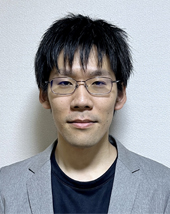
Name of laboratory
RIKEN Cluster for Pioneering Research Meson RIKEN ECL Research Team
RIKEN Nishina Center for Accelerator-Based Science Meson RIKEN ECL Research Team
Research topic
Exploring novel forms of matter containing an anti-kaon and interdisciplinary application of superconducting X-ray detectors
Self-introduction
How do the diverse matters around us evolve in the microscopic world, from quarks, the elementary particles, to nucleons (protons and
neutrons) and then to atomic nuclei? The fundamental theory of quantum chromodynamics should answer this question. However, many mysteries remain, such as how nucleons acquire mass and why there appears to be a hierarchy between nucleons and atomic nuclei. My approach to addressing these issues involves embedding mesons, which are quark-antiquark pairs, into atomic nuclei and measuring changes in the properties of mesons and atomic nuclei.
Additionally, I aim to expand the applications of superconducting X-ray detectors with excellent energy resolution, initially introduced for a nuclear physics experiment, to various fields such as atomic and molecular physics. (Starting date: April 1, 2024)
Shuntaro Tani
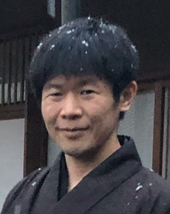
Name of laboratory
RIKEN Cluster for Pioneering Research Digital Twin for Light-Matter Interaction RIKEN ECL Research Team
RIKEN Center for Advanced Photonics Digital Twin for Light-Matter Interaction RIKEN ECL Research Team
Research topic
Constructing Digital Twin for Multi-Scale Phenomena Driven by Photo-Excitation
Self-introduction
With the advancement of laser technology, we can now apply laser fields onto materials, the strength of which is comparable to the interatomic bonds of the materials themselves. These strong and controllable light electric fields are expected to be utilized in precise laser processing and various forms of material state control. However, the physics underlying irreversible processes, such as the fragmentation of a continuous solid into discrete atoms, remains not fully understood. At present, extensive trial and error is necessary to control these processes. In this research project, we aim to develop a method to extract the 'context' of phenomena by extensively observing microscopic processes beginning with photoexcitation, through the complete automation of measurements. Utilizing this technique, we intend to elucidate the governing equations of materials' irreversible transformation and construct a digital twin for optimizing these processes. (Starting date: May 1, 2024)
Masayuki Oginuma
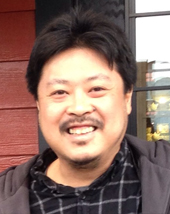
Name of laboratory
RIKEN Cluster for Pioneering Research Chrono-Developmental Biology RIKEN ECL Research Team
RIKEN Center for Biosystems Dynamics Research Chrono-Developmental Biology RIKEN ECL Research Team
Research topic
Elucidation of the time control mechanisms during embryonic development
Self-introduction
Organisms possess a remarkable 'blueprint of time'. Embryonic development, from fertilization to body formation, follows a precise schedule regulated by a clock mechanism encoded in the genes. However, the specific molecular mechanism remains largely unknown. The turquoise killifish, which inhabits an African pond, can suspend embryonic development and enter a diapause state for extended periods. My study aims to clarify the diapause mechanism of this highly evolved clock-stopping phenomenon and also apply this knowledge to other organisms, thereby revealing the molecular mechanism of the 'blueprint of time'. (Starting date: May 1, 2024)
Shihori Yokobayashi

Name of laboratory
RIKEN Cluster for Pioneering Research Epigenome Dynamics RIKEN ECL Research Team
RIKEN Center for Integrative Medical Sciences Epigenome Dynamics RIKEN ECL Research Team
Research topic
Understanding the molecular basis of epigenome diversity
Self-introduction
I am interested in the molecular mechanisms that give rise to phenotypic diversity and have studied the mechanisms of germline development and epigenome regulation. Epigenome information enables the generation of various cell types from a single genome information. Epigenome states are dynamically regulated during the development of an individual and throughout its life, but to what extent diversity (e.g., cell-to-cell heterogeneity and individual differences) emerges during the establishment and maintenance of epigenome state is not known. During the ECL program, I aim to understand the molecular basis of epigenome diversity and its effects on the response to environmental cues or cell fate changes through cell- and tissue-level analyses using mammals, including humans. In the future, I would like to explore the link between epigenome diversity and individual phenotypic diversity in disease susceptibility and other areas. (Starting date: August 1, 2024)
Reina Komiya
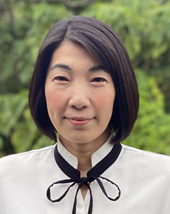
Name of laboratory
RIKEN Cluster for Pioneering Research Reproductive System RIKEN ECL Research Team
RIKEN Center for Sustainable Resource Science Reproductive System RIKEN ECL Research Team
Research topic
Reproductive Non-coding RNA System in Plants
Self-introduction
Throughout history, the Japanese have engaged in a continuous 2000-year journey intertwined with rice cultivation. The serene beauty of golden-hued rice fields has long evoked feelings of tranquility and joy in many, including myself. My research focuses on the reproductive system in rice, which profoundly connects to seed productivity. This research aim is to elucidate the molecular mechanism of numerous reproductive non-coding RNAs and their interactors in plant reproduction. As a final goal, I intend to develop the RNA regulation devices using functional RNAs that are respectively adapted under various environments. (Starting date: September 1, 2024)
Makoto Saito
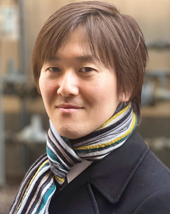
Name of laboratory
RIKEN Cluster for Pioneering Research Biophenomena Engineering RIKEN ECL Research Team (tentative name)
Research topic
Exploring natural diversity to develop next-generation therapeutics
Self-introduction
What drives my research is a curiosity about how assemblies of molecules can orchestrate life and a desire to apply our knowledge of this molecular orchestration to enable treatment of as many diseases as possible. The evolution of sequencing technologies has unveiled genome information from diverse organisms. However, we still have a limited understanding of the function of the biomolecules encoded in those blueprints of life, and how those biomolecules cooperate to give rise to the wealth of biophenomena around us. Just as the unique adaptive immune system of microorganisms, CRISPR-Cas, has been engineered to serve as a revolutionary genome editing technology, I believe there are unseen biological systems in nature that can be harnessed to solve the challenges facing humanity. With this belief, I aim to conduct AI-driven genome mining for biological systems with new modalities, biochemical analysis and engineering of the identified biomolecules, and ultimately establish next-generation therapeutics for hard-to-treat diseases. (Starting date: January 1, 2025)
RIKEN ECL Unit Leader
Yukako Fujishiro
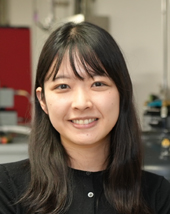
Name of laboratory
RIKEN Center for Emergent Matter Science Extreme Quantum Matter Physics RIKEN ECL Research Unit
RIKEN Cluster for Pioneering Research Extreme Quantum Matter Physics RIKEN ECL Research Unit
Research topic
Exploration of new electronic functionality in single-crystalline quantum materials under extreme conditions
Self-introduction
Quantum materials exhibit surprising phenomena due to complex interactions among electrons. My prior research focused on the exploration of electronic responses arising from topological spin textures and electronic structures. I often believed that with greater flexibility in manipulating materials’ parameters, such as lattice constants and carrier density, we could unlock even more intriguing electronic functionalities. Therefore, my research unit is dedicated to engineering quantum phase phases previously inaccessible with conventional methods. Specifically, we employ a microfabrication technique using a focused ion beam to induce high-density currents, apply ultra-high pressure, or perform ion-intercalation. These methods create “extreme” conditions within quantum materials, marking a significant step towards uncovering unprecedented electronic functionalities. (Starting date: April 1, 2024)
Toshitake Asabuki
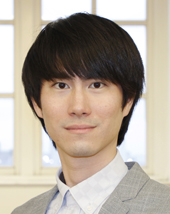
Name of laboratory
RIKEN Center for Brain Science Hierarchical Neural Computation RIKEN ECL Research Unit
RIKEN Cluster for Pioneering Research Hierarchical Neural Computation RIKEN ECL Research Unit
Research topic
Building brain-inspired neural circuit models for learning hierarchical predictive features
Self-introduction
The brain has the ability to learn new information and experiences and to adapt flexibly by integrating them with prior knowledge. This process requires the brain to hierarchically organize and abstract information to learn representation of the external world. I have mainly investigated how neural circuits learn salient features by mathematically modeling "synaptic plasticity", where connections between neurons adapt with experience. In the lab, I would like to build models of synaptic plasticity in which multiple neural circuits collaborate in learning and replicate existing experimental data. I believe this approach will deepen our understanding of the flexible processing of neural information. (Starting date: June 1, 2024)
Naoko Satoh-Takayama

Name of laboratory
RIKEN Center for Integrative Medical Sciences Precision Immune Regulation RIKEN ECL Research Unit
RIKEN Cluster for Pioneering Research Precision Immune Regulation RIKEN ECL Research Unit
Research topic
Spatial understanding of immune responses regulated by microenvironmental changes
Self-introduction
Having suffered from severe atopic dermatitis when I was childhood, I became interested in immunity, wondering why itching is induced and what the mechanisms are. These questions led me to pursue a career as an immunologist, which I continue to this today. This interest in understanding the immune responses subsequently led to the discovery of group 3 innate lymphoid cells (ILC3s), a new immune cell resides in the intestinal tract. The ILC3s are known to be strongly affected by changes in the microenvironment, altering the cell-phenotype and its function. In the future, I will aim to elucidate the mechanism by which microenvironmental changes regulate immune responses from a spatial perspective of tissues and organs. (Starting date: June 1, 2024)
Kei Murata
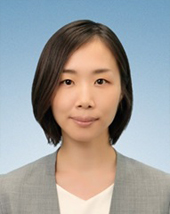
Name of laboratory
RIKEN Center for Sustainable Resource Science Molecular Photocatalysis RIKEN ECL Research Unit
RIKEN Cluster for Pioneering Research Molecular Photocatalysis RIKEN ECL Research Unit
Research topic
Development of innovative transition-metal catalyzed reactions driven by visible/near-infrared light
Self-introduction
I have been working on the development of visible/near-infrared light driven photoreactions using transition-metal complexes that contributes to various molecular systems such as the carbon dioxide conversion and the drug release. Photochemical reactions are attractive because they enable the use of solar energy as well as the reaction processes which are usually difficult to perform with thermochemical reactions, as in photosynthesis in nature. Photocatalysts are particularly useful as they realize a variety of molecular transformations using light energy through the construction of reaction cycles including substrate capture and product release processes in addition to a photochemical process. With cross-disciplinary research approaches based on organometallic chemistry, photochemistry and biochemistry, this research project aims to develop the new methodologies for molecular transformation reactions catalyzed by transition-metal complexes that contribute to solve global issues in the fields of environmental and medical sciences. (Starting date: September 1, 2024)
Dongbo Shi
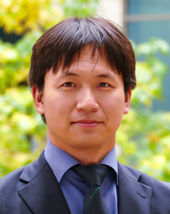
Name of laboratory
RIKEN Center for Sustainable Resource Science Cambial Stem Cell System RIKEN ECL Research Unit
RIKEN Cluster for Pioneering Research Cambial Stem Cell System RIKEN ECL Research Unit
Research topic
Elucidating the stem cell systems that enable continuous plant growth
Self-introduction
Many plants can continue to grow throughout their lives. Stem cells play an important role in the continued growth of plants, and among them, cambial stem cells have been the driving force behind the secondary growth of plants, contributing to the gigantic size of land plants. Cambial stem cells maintain themselves while differentiating into various cell types and change their activity in response to the environment, such as the seasons in coordination with surrounding cells. However, many of the underlying mechanisms are still unknown. By uncovering these mechanisms, we will reveal the plant-like nature of growth at the cellular level and explore the differences in survival strategies between plants and animals. (Starting date: October 1, 2024)
Leo Speidel

Name of laboratory
RIKEN Interdisciplinary Theoretical and Mathematical Sciences Program Mathematical Genomics RIKEN ECL Research Unit (tentative name)
RIKEN Cluster for Pioneering Research Mathematical Genomics RIKEN ECL Research Unit (tentative name)
Research topic
Developing powerful statistical techniques to uncover human origins and millennia of genome evolution
Self-introduction
Differences in our DNA can reveal evolutionary events that have impacted our ancestors, such as prehistoric migrations and population mixtures, adaptation to changing climate, diet, pathogenic exposure, and technologies, or contact with now extinct sister species, such as Neanderthals. The product of this evolution, and its impact on human health, are now being uncovered by Biobank-scale sequencing projects around the world. Additionally, ancient DNA has arrived as a revolutionary tool enabling the sequencing of genomes of people living thousands of years in the past. In my work, I develop powerful statistical tools that leverage these data to uncover human evolution and its consequences for us today, from key events in a nation’s recent past to the earliest days of our species. We achieve this by reconstructing “genetic family trees” across the whole genome that trace genetic material through their common ancestors back in time, enabling us to study genome evolution up to millions of years in the past. (Starting date: November 1, 2024)
